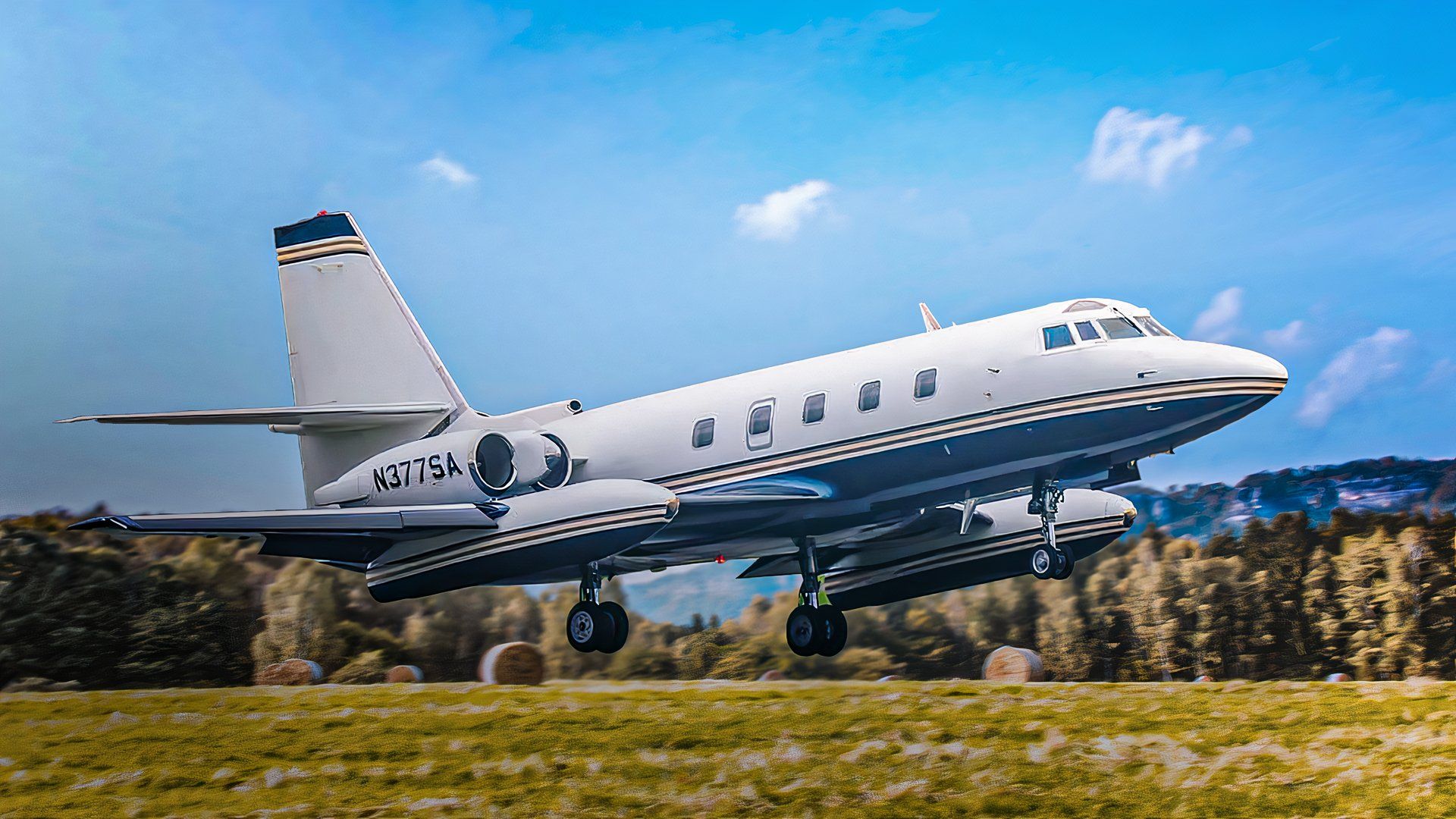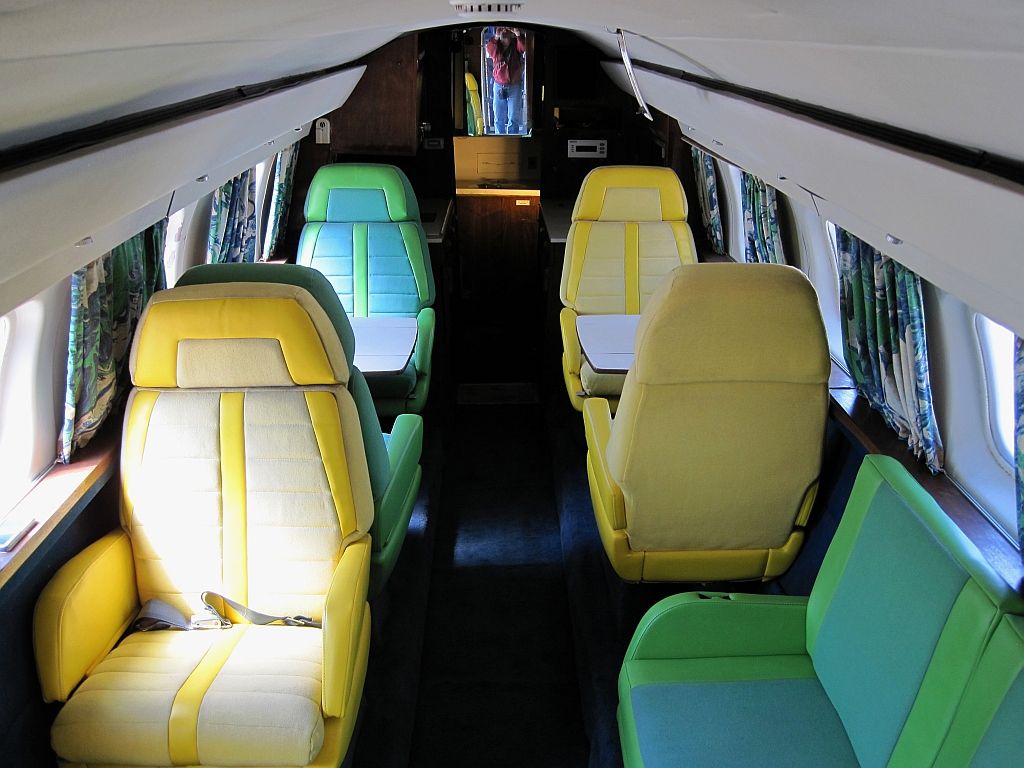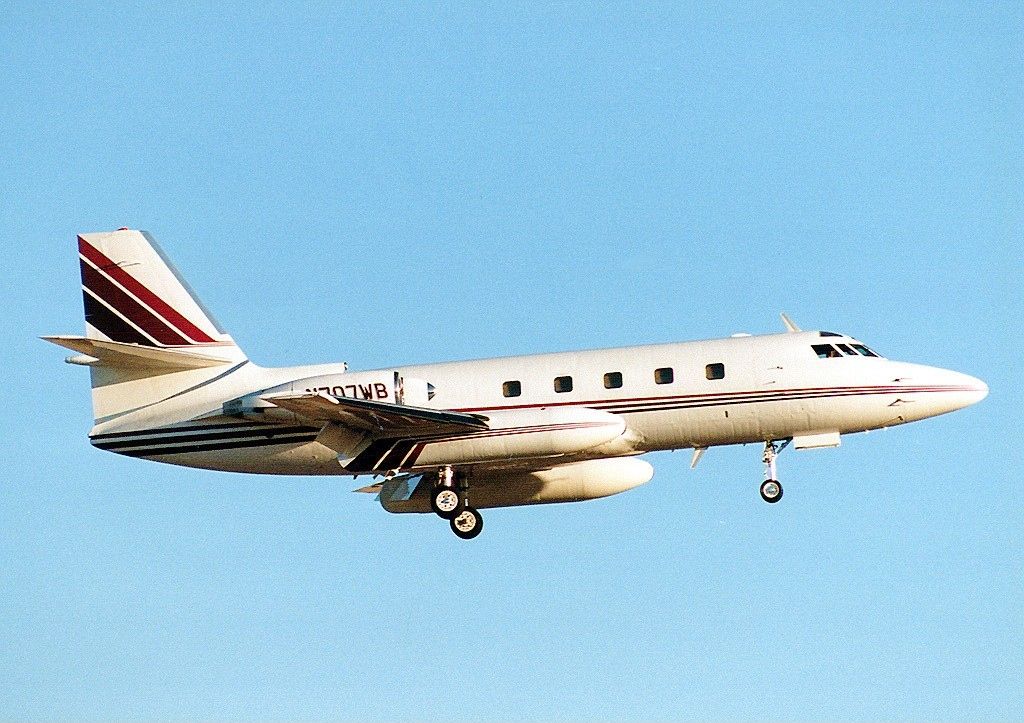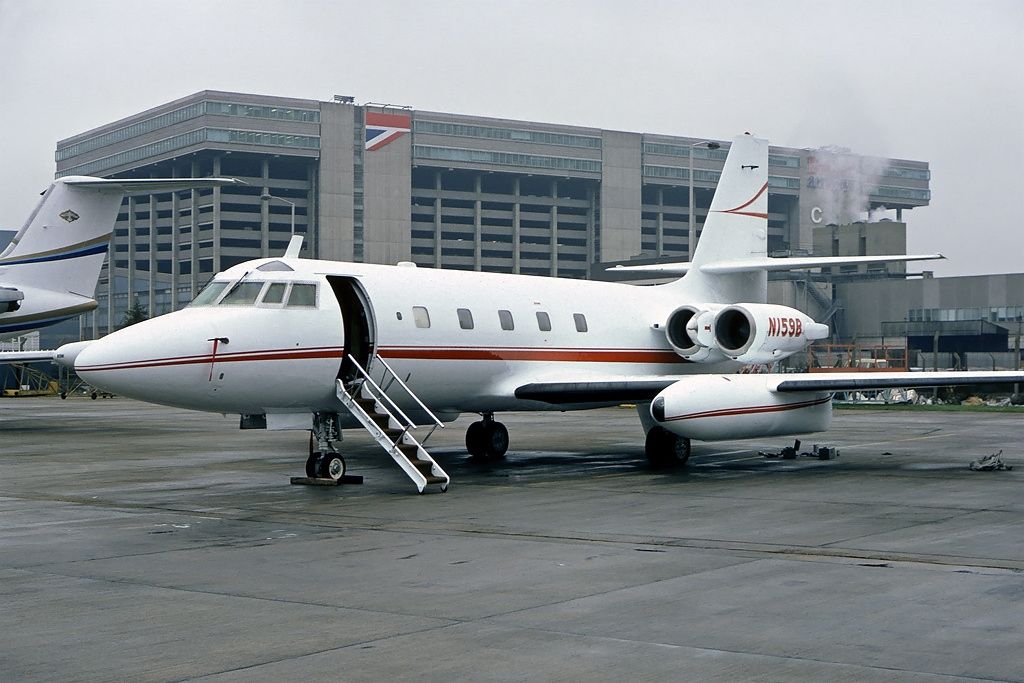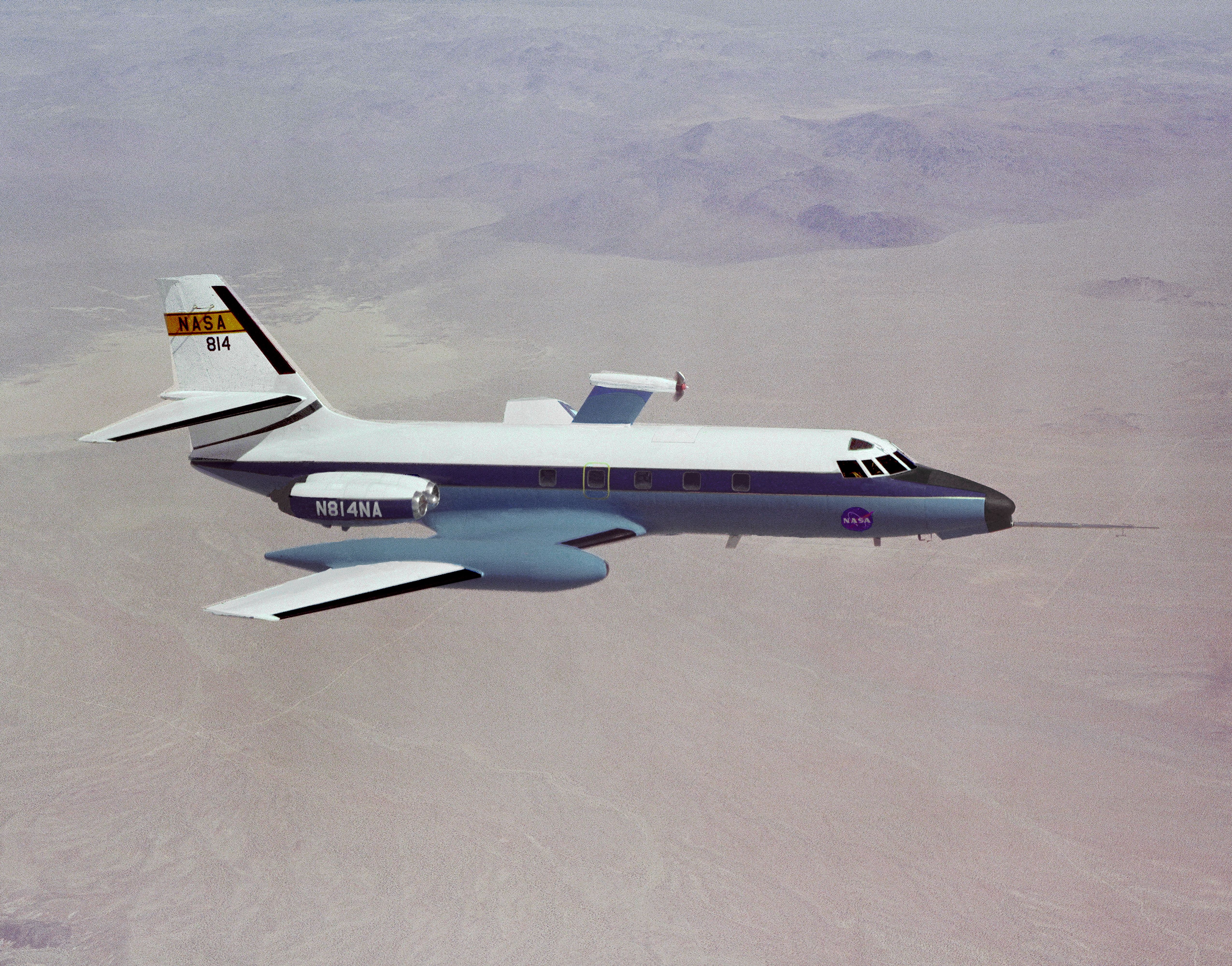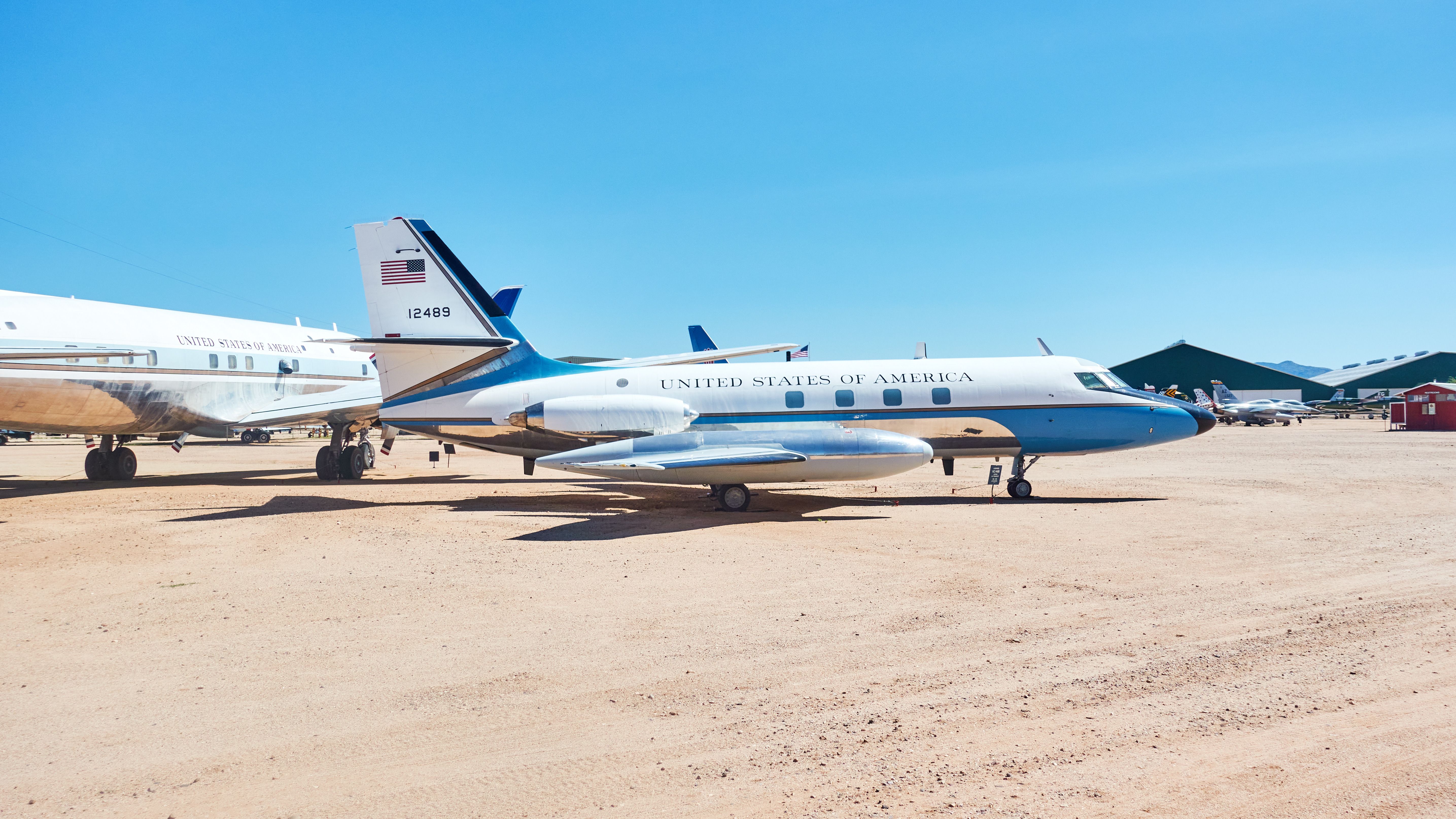Summary
- The Lockheed Jetstar was the world’s first dedicated business jet, capable of long-range flights.
- The layout of private jets allows for intimate conversations and a cozy atmosphere, ideal for high-ranking executives.
- State-of-the-art turbojet engines powered the JetStar with several upgraded variants and cost around $745,000.
Private jets are celebrities’ favorite means of long-distance transportation worldwide. Today, there are many jets to choose from, suiting virtually every use case possible, from the relatively affordable Vision Jet to the ultra-luxurious 747-8BBJ used by a handful of governments worldwide. But did you know how it all began? Today, we will look at what many consider the original private jet to grace the skies: the Lockheed Jetstar.
Some history about the world’s first private jet.
According to the Pacific Coast Air Museum, which has preserved an airframe with the tail number N377SA, the Jetstar is an executive business jet produced in the 1960s and 1970s by Lockheed Corporation (originally the Lockheed Aircraft Manufacturing Company). It was the first dedicated business jet to enter service, capable of cruising at over 500 mph, and had a range of nearly 3,000 miles. The Jetstar is a relatively large business jet that can accommodate up to 10 passengers, along with a crew of two pilots and one flight attendant.
The aircraft below is not N377SA; it is another aircraft of the same type for illustration purposes.
This range meant the jet could easily travel up and down the US mainland coasts and achieve a transcontinental US flight with just one stop. This is very impressive because this was the beginning of the jet age.
What was it like inside?
Today, most private jets have the same layout, regardless of the number of passengers they can carry. We have mentioned it in a few articles already, but the reason this layout prevailed over what is typically seen in commercial aviation is simple: intimacy.
Having customers face each other makes it easier to have conversations; it creates an atmosphere where speakers and listeners are close to each other. This allows for casual interactions and makes business discussions more accessible and comfortable, thus creating an advantage for high-ranking executives over commercial first or business class.

Related
4 Celebrities Who Flew The Lockheed Jetstar
Over 200 JetStars were produced.
What are the specifications of the jet?
We covered range and capacity earlier. Now, let’s look at some of the other unique features of this vintage private aircraft, starting with the engines. The Jet Star was not the first private aircraft—Boeing Stratoliners were used for executive government transport in the past—but what made it a first was the revolutionary propulsion method: jet engines.
This little private jet had four Pratt & Whitney JT12A-8 turbojet engines. These were low-bypass models, meaning more air went through the core than around it. Today, these have almost entirely been phased out as they are incredibly inefficient, but at the time the Jetstar was built, they were state-of-the-art technology.
The several variants of the aircraft
The JetStar II was an upgraded production model with four Garrett TFE731-3 turbofan engines, each providing 3,700 lbf (16.5 kN) of thrust. This version was improved with revised external fuel tanks, and 40 aircraft were built.
The JetStar 731 was a further modification, utilizing four Garrett TFE731-1 turbofan engines. It also features redesigned external fuel tanks to enhance its performance and efficiency.
The C-140A served as a flight inspection aircraft for the US Air Force. It closely resembled the JetStar I, and five units were produced.
The C-140B variant was designed for passenger and cargo transport within the US Air Force, maintaining similarities with the C-140A. Five units were also built.
The VC-140B was a VIP transport aircraft tailored for the US Air Force, based on the C-140B design, with six units built, offering enhanced comfort and amenities for high-ranking officials.
The C-140C designation was assigned to two JetStar 6s that the United States Navy ordered, initially designated UV-1, but these units were ultimately not delivered.
The T-40 was a proposed military trainer version of the C-140 intended for evaluation by the US military, but it was never constructed.
Lastly, the AAI FanStar was a unique conversion undertaken by American Aviation Industries, where one aircraft was equipped with two General Electric CF34 engines instead of the traditional four JT12 turbojets or TFE731 turbofans. This prototype first took to the skies on September 5, 1986. However, only one aircraft underwent this conversion, and the modifications, particularly to the interior, became the subject of litigation in federal court during the late 1980s and early 1990s.
How much does it cost?
The Jetstar has been produced in less than 40 years, so by definition, there will not be any new models available to buy. Furthermore, with the airframes being many decades old, most have already been scrapped – and the few that aren’t may not necessarily be airworthy anymore.
Simple Flying could not confirm if the aircraft was still available to buy or was currently in its current fate. However, reports of the “latest” generation JetStar II built in 1978 were available for $745,000.
The jet’s tail number was reported to be N116DD. Here are some notes aircraft.com had about the plane.
7,227 Hours Since New 5,085 Cycles Since New Tank & Plank c/w July 2007 Overhauled Pitch Trim Actuator Installed 1998 Wing Bolts & Attach Fittings SB c/w 2008 Pylon Inspection SB c/w 2008 Nose Wheel Steering Actuator Non-Life Limited Tail SB c/w High AD/SB Status No Damage History & Complete Logbooks RVSM Certified, 8.33 Spacing & FM Immunity 300 Hour / 12 Month Inspection c/w May 2010
There are reports that Delta-Delta has been broken up and is now preserved outside an undisclosed home in the United States.

